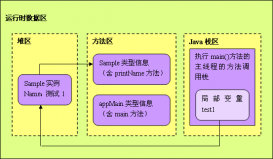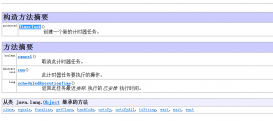前言
在很多时候,我们代码中会有很多分支,而且分支下面的代码又有一些复杂的逻辑,相信很多人都喜欢用 if-else/switch-case 去实现。做的不好的会直接把实现的代码放在 if-else/switch-case 的分支之下:
|
1
2
3
4
5
6
7
8
9
10
11
12
13
14
15
16
|
switch ( type ) { case case1: ... ... break; case case2: ... ... break; case case3: ... ... break default: return null;} |
这样的代码不仅冗长,读起来也非常困难。做的好一点的会把这些逻辑封装成函数然后在分支中调用:
|
1
2
3
4
5
6
7
8
9
10
|
switch ( type ) { case case1: return case1func(); case case2: return case2func(); case case3: return case3func(); default: return null;} |
即使这样也是面向过程思维的写法,以前写 c 程序的时候也总喜欢这样写,毫无设计模式可言。不仅违背开闭原则,而且随着 switch-case 分支的增多,该段代码只会越来越冗长。其实这种代码已经有成熟的模式去消除诸多的 if-else/switch-case 分支。本文就教大家在 spring 中如何用注解+策略模式+简单工厂的方式消除 if-else/switch-case 。我们就拿 qq 空间的个人中心举例子,假如 qq 空间个人中心有四个 tab 分别是列出我的说说、我的日志、我的照片和我的访客。一般的后台代码很有可能如下:
|
1
2
3
4
5
6
7
8
9
10
11
12
13
14
15
16
17
18
19
20
21
22
23
24
25
26
27
28
29
30
31
32
33
34
35
36
|
//各个 tab 名称的枚举:public enum userrelatedtype { /** * 说说 */ shuoshuo("说说"), /** * 日志 */ rizhi("日志"), /** * 发布 */ zhaopian("照片"), /** * 访客 */ fangke(""); private string desc; userrelatedtype(string desc) { this.desc = desc; } public string getdesc() { return desc; } public void setdesc(string desc) { this.desc = desc; }} |
列出 qq 用户个人中心相关 tab 的代码:
|
1
2
3
4
5
6
7
8
9
10
11
12
13
14
15
16
|
public list<userrelatedvo> listrelated(userrelatedquery query){ userrelatedtype relatedtype = userrelatedtype.valueof(stringutils.uppercase(query.gettype()) ); switch ( relatedtype ) { case shuoshuo: return listrelatedshuoshuo( query ); case rizhi: return listrelatedrizhi( query ); case zhaopian: return listrelatedzhaopian( query ); case fangke: return listrelatedfangke( query ); default: return null; }} |
而采用注解+策略模式+简单工厂,重构后代码如下:
1、定义一个注解,用来完全消除 if-else:
|
1
2
3
4
5
6
7
8
|
@target(elementtype.type)@retention(retentionpolicy.runtime)public @interface relatedtypeannotation { /** * 用户相关类型名称 */ userrelatedtype value();} |
2、先定义了个接口,所有 tab 都要实现该接口。其中 list 是 tab 数据展示的方法。
|
1
2
3
4
5
6
7
8
9
10
|
public interface userrelated { /** * 列出详细信息 * * @param query * @return */ list<userrelatedvo> list(userrelatedquery query);} |
3、定义具体的各个 tab 的实现,继承 userrelated 策略接口
我的说说
|
1
2
3
4
5
6
7
8
9
|
@component("userrelatedshuoshuo")@relatedtypeannotation( value = userrelatedtype.shuoshuo )public class userrelatedshuoshuo implements userrelated { @override public list<userrelatedvo> list(userrelatedquery query) { system.out.println("我的说说!"); return list; }} |
我的日志
|
1
2
3
4
5
6
7
8
9
|
@component("userrelatedrizhi")@relatedtypeannotation( value = userrelatedtype.rizhi )public class userrelatedrizhi implements userrelated { @override public list<userrelatedvo> list(userrelatedquery query) { system.out.println("我的日志!"); return list; }} |
我的照片
|
1
2
3
4
5
6
7
8
9
|
@component("userrelatedzhaopian")@relatedtypeannotation( value = userrelatedtype.zhaopian )public class userrelatedzhaopian implements userrelated { @override public list<userrelatedvo> list(userrelatedquery query) { system.out.println("我的照片!"); return list; }} |
我的访客
|
1
2
3
4
5
6
7
8
9
|
@component("userrelatedfangke")@relatedtypeannotation( value = userrelatedtype.fangke )public class userrelatedfangke implements userrelated { @override public list<userrelatedvo> list(userrelatedquery query) { system.out.println("我的访客!"); return list; }} |
3、定义一个从 spring context 获取 bean 的工具类
|
1
2
3
4
5
6
7
8
9
10
11
12
13
14
|
@componentpublic class springcontextutil implements applicationcontextaware { private applicationcontext context; public applicationcontext getcontext() { return context; } @override public void setapplicationcontext(applicationcontext context)throws beansexception { this.context = context; }} |
4、定义一个简单工厂,用来生产各种 tab 对象。
|
1
2
3
4
5
6
7
8
9
10
11
12
13
14
15
16
17
18
19
20
21
22
|
@componentpublic class userrelatedfactory { @autowired springcontextutil springcontextutil; private static map<userrelatedtype, userrelated> userrelatedmap = maps.newconcurrentmap(); //工厂将 spring 装配的相关的 bean 用 map 保存起来 public userrelatedfactory(){ map<string, object> beanmap = springcontextutil.getcontext().getbeanswithannotation(relatedtypeannotation.class); for(object userrelated : beanmap.values()) { relatedtypeannotation annotation = userrelated.getclass().getannotation(relatedtypeannotation.class); userrelatedmap.put(annotation.value(), (userrelated)userrelated); } } public static userrelated createrelated(userrelatedtype relatedtype) { return userrelatedmap.get( relatedtype ); }} |
5、调用的代码(listrelated 会在 controller 中被调用)。
|
1
2
3
4
5
6
7
8
9
10
|
public list<userrelatedvo> listrelated(userrelatedquery query){ userrelatedtype relatedtype = userrelatedtype.valueof(stringutils.uppercase(query.gettype()) ); userrelated related = userrelatedfactory.createrelated( relatedtype ); if( related != null ) { return related.list( query ); } else { return null; }} |
重构后的代码如果需要再新增一种 tab,比如我的好友,只需要新增一种类型继承 userrelated 实现其中的 list,并加上相应的注解即可。
其实这是一种通用的解决方案,当你 if-else/switch-case 的分支超过 3 个、且分支代码相似且冗长的情况下就应该考虑这种模式。这种模式写出的代码面向对象、清晰、易扩展还高大上,何乐而不为呀,赶紧试试吧!
总结
以上就是这篇文章的全部内容了,希望本文的内容对大家的学习或者工作具有一定的参考学习价值,谢谢大家对服务器之家的支持。
原文链接:https://juejin.im/post/5ca9f113e51d452b5e458ec3













